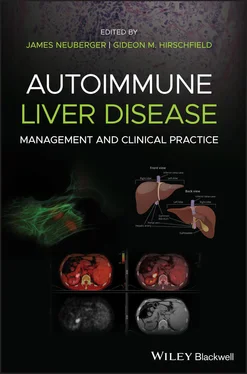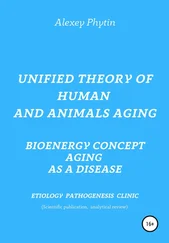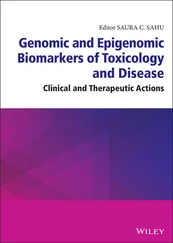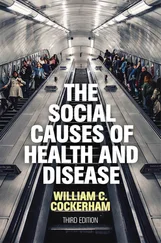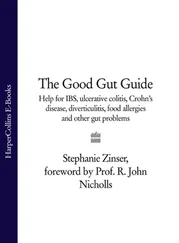Non‐HLA Gene Associations
Interpreting the risks for autoimmune diseases conferred by non‐HLA genes is problematic because the odds ratios for risk of autoimmune diseases are far lower than those for HLA alleles [15]. Polymorphisms in genes encoding CTLA‐4, TNF‐α, Fas (CD95), TNF‐induced protein 3 (TNFAIP3), macrophage migration inhibitory factor (MIF), and SH2B adapter protein 3 (SH2B3) have been implicated in susceptibility to autoimmune diseases, including AILDs. CTLA‐4 is critical for downregulating effector immune responses and producing T‐cell senescence. TNF‐α is a potent proinflammatory effector cytokine and therapeutic target in specific autoimmune diseases. Dysfunction of genetic variants or deficient levels of TNFα‐induced protein 3‐interacting protein 1 (TNIP1) predispose normal innate cells to produce abnormal inflammatory responses to innocuous TLR ligands. TNFAIP3 is a modifying enzyme for ubiquitin, which may influence antigenicity of self‐proteins. CD95 (Fas) and CD95L (FasL) variants promote survival of autoreactive T and B cells and modify apoptosis of target cells. MIF is a proinflammatory cytokine in both innate and adaptive immunity. SH2B3 suppresses cytokine‐induced inflammation by downregulating Janus kinases (JAKs) and receptor tyrosine kinases (RTKs). Several autoimmune diseases also are linked to SNPs in cytokine and cytokine receptor genes. A pertinent example is the IL23R gene, which encodes a protein that forms a dimer with IL‐12Rβ1 to create the IL‐23 receptor complex required for IL‐23 induction of proinflammatory Th17 cells.
Critical Role of Epigenetics
Transcription Factor Enhancers and Super Enhancers
Gene transcription is an essential process in autoimmunity and autoimmune disease specificity. Emerging evidence indicates that the generation and perpetuation of autoimmunity is primarily driven by epigenetics [16]. Over 90% of the thousands of disease‐associated SNPs detected by GWAS are localized within non‐coding regions of DNA, that produce regulatory enhancers, sometimes occurring in clusters spanning 50 kb of DNA, called super enhancers (SEs). Multiple enhancers and SEs control the expression of protein‐coding genes. These enhancers, especially SEs, are especially important drivers of cell‐ and tissue‐specific genes. Enhancer functions are mediated through transcription‐factor (TF) binding motifs that require TF recruitment and nucleation of transcriptional machinery. Thus, enhancer activity depends on the local structure of chromatin responsible for the packaging of DNA in association with histone proteins. Since tightly packed DNA is inaccessible to DNA‐binding TFs, additional epigenetic mechanisms are required to render DNA accessible to enhancer TFs. These processes include methylation of DNA and posttranscriptional modification of histones through methylation, acetylation, or ubiquitination. Epigenetic proteins also interact directly with transcriptional mechanisms and enhancer DNA can also generate enhancer RNA (eRNA) to increase the amount of enhancer proteins. Epigenetic long non‐coding RNAs (lncRNAs) are expressed within innate immune cells and CD4 Th1, Th2, Th17, Tregs, CD8 and B cells. lncRNAs directly regulate activation and functions of immune cells. lncRNAs promote susceptibility to autoreactivity and perpetuation in autoimmune diseases, including systemic lupus erythematosus (SLE), rheumatoid arthritis (RA), multiple sclerosis (MS), and psoriasis.
MicroRNAs (miRNAs) function epigenetically as posttranscriptional and posttranslational regulators of gene expression [17]. miRNAs and TFs regulate each other's expression in feedback loops: TFs are negatively regulated by miRNAs, while miRNAs are positively regulated by TFs. Compelling evidence indicates that miRNAs control the activation state of innate macrophages and DCs, activation of T cells, apoptotic elimination of activated T and B cells, and the critical balance between iTregs and Th17 cells in sites of inflammation. To date multiple miRNAs have been implicated in the immunopathogenesis of autoimmune diseases, including AILDs.
Most autoimmune diseases have a female predilection [1,18]. However, PSC is a notable exception among AILDs ( Table 2.1). Sex is genetically binary and imprinting of XX female and XY male genomes occurs in all cells from embryogenesis throughout life [18]. Both innate and adaptive immune cells have sex hormone receptors, and sex hormones contribute to the development and activity of the immune repertoire ( Figure 2.1). Yet it is unclear whether female predominance in autoimmune diseases reflects regulatory mechanisms related to sex‐linked genes, sex‐specific hormones or a combination of both. Females normally produce higher titers of antibodies, more autoantibodies and greater cell‐mediated immunity to infections and immunization than do normal males. In addition, there is a gender bias in AIRE expression in the thymus, which may impact deletion of autoreactive clones and formation of nTregs and Bregs. Estrogen levels are also immunoregulatory: high levels inhibit CD4 Th1‐mediated cellular responses and promote CD4 Th2 antibody‐mediated responses. Prolactin, progesterone and testosterone also regulate immune responses by modulating expression of estrogen receptors and altering cytokine secretion. However, the effects of estrogen and other sex hormones in adult women do not explain the female predilection for autoimmunity in children or elderly adults. Postulated explanations include skewed X chromosome activation, X monosomy, and microchimerism. Beginning during embryogenesis and continuing through life, either the maternal or paternal X chromosome within each cell is inactivated, forming a Barr body adjacent to the nucleolus. Thus, females are a mosaic of two cell types, based on the parental source of the active X chromosome. Skewing of X inactivation varies widely and increases with age. Thus, some X‐linked autoantigens might theoretically escape central or peripheral tolerance. The proximity of Barr bodies to the nucleolus suggested that they may interact to expose cryptic autoantigens. X monosomy might promote autoimmunity by preventing tolerance to autoantigens encoded by both X chromosomes. Entry of fetal hematopoietic stem cells into the maternal circulation during pregnancy can cause fetal–maternal microchimerism that could promote loss of self‐tolerance.
Vitamin D and Sunlight Exposure
In addition to its roles in bone mineralization and calcium homeostasis, vitamin D modulates immune reactions and risk for autoimmunity [19]. Both vitamin D deficiency and genetic polymorphisms in the vitamin D receptor (VDR) increase the incidence and severity of multiple autoimmune diseases. Conversely, high vitamin D levels reduce the risk of MS. Reduction in sunlight exposure and synthesis of 1,25‐dihydroxyvitamin‐D 3(D3) might explain, in part, the strong correlation between the incidence of autoimmune disease and increasing latitude.
SNPs in two VDR genes, Bsm I and Taq I, are associated with AILDs. SNPs in these genes and Fok I are associated specifically with AIH. Dietary vitamin D and vitamin D synthesized in response to ultraviolet‐B radiation in sunlight determine serum vitamin D levels. Sequential hydroxylation in the liver and kidney produce D3, the most potent ligand for VDRs. Innate and adaptive immune cells express VDRs that induce multiple immunologic effects. For example, D3 regulates production of antimicrobial peptides and reactive oxygen species in innate immune cells and promotes NKT cell immunomodulatory functions. D3 also downregulates immunopathogenic CD4 Th1 and Th17 cells, while upregulating immunosuppressive CD4 Th2 cells and iTregs. By reducing Th1 secretion of IL‐2, D3 not only inhibits proliferation of CD4 and CD8 effector T cells but also generates low IL‐2 levels, favoring proliferation of functional iTregs.
Читать дальше
